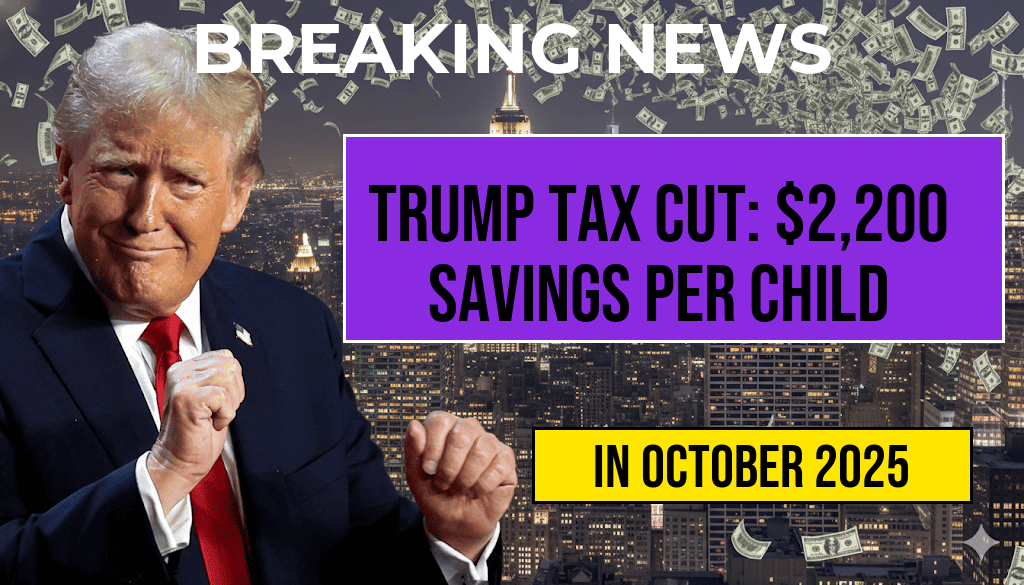The recent analysis by The Washington Post has revealed that while the Trump tax cut may not be the largest in U.S. history, it could still provide significant savings for American families. According to the Post’s economic model, households with children stand to benefit from an estimated tax reduction of up to $2,200 per child. This finding has sparked discussions about the broader implications of tax policy changes on family finances and the potential for economic growth. As families navigate financial challenges, these tax savings could play a crucial role in their budgets, especially in the context of rising living costs. The report emphasizes the importance of understanding how such tax cuts can impact various demographics, particularly middle- and lower-income families.
Understanding the Tax Cut’s Impact
The Trump administration’s tax reform, enacted in December 2017, aimed to stimulate economic growth by reducing corporate tax rates and providing individual tax cuts. While critics have pointed out that the benefits of these cuts disproportionately favor wealthier individuals, the recent analysis highlights a more nuanced picture for families with children.
Key Findings from the Washington Post Model
- Estimated Savings: Families could save an average of $2,200 for each child claimed on their tax returns.
- Target Demographics: The savings are particularly pronounced for middle-income households, which could see their tax burdens significantly reduced.
- Long-Term Effects: While immediate savings are beneficial, the long-term economic consequences of the tax cuts remain a topic of debate among economists.
How Families Can Benefit
The potential $2,200 savings per child can be a game-changer for many American families. This amount could help cover essential expenses such as education, healthcare, and childcare. As families weigh their financial options, understanding how to maximize their tax benefits becomes increasingly important.
Strategies for Maximizing Tax Benefits
- Claiming Dependents: Ensure that all eligible children are claimed as dependents on tax returns to receive the maximum tax credit.
- Utilizing Tax Credits: Investigate available tax credits, such as the Child Tax Credit, which directly reduces the amount owed to the IRS.
- Consulting with Tax Professionals: Engaging with a tax advisor can help families navigate complex tax laws and optimize their savings.
Broader Economic Implications
The implications of the Trump tax cuts extend beyond individual families. Economists are closely monitoring how these tax savings might influence consumer spending, investment patterns, and overall economic growth. Historical data suggests that tax cuts can lead to increased consumer confidence, potentially stimulating the economy.
Comparative Analysis
| Tax Cut | Year Enacted | Primary Beneficiaries | Estimated Average Savings |
|---|---|---|---|
| Trump Tax Cut | 2017 | Families, Corporations | $2,200 per child |
| Reagan Tax Cut | 1981 | All taxpayers | Varied |
| Clinton Tax Cut | 1997 | Families with children | $500 per child |
Conclusion
The analysis from The Washington Post sheds light on the tangible benefits that families may experience from the Trump tax cuts, despite the ongoing debate about their overall effectiveness. As families seek ways to improve their financial situations, these potential savings will likely influence their spending habits and financial planning moving forward. Policymakers and economists will continue to assess the long-term impacts of such tax reforms on the economy and families alike.
For more information on tax policies and their implications, you can visit Wikipedia or check out economic analyses on Forbes.
Frequently Asked Questions
What is the main finding of the WaPo model regarding the Trump tax cut?
The WaPo model suggests that while the Trump tax cut may not be the biggest, families could still save approximately $2,200 per child.
How does the Trump tax cut affect families with children?
The tax cut primarily benefits families with children by providing substantial savings, which can amount to around $2,200 for each child in the household.
Why might some consider the Trump tax cut not to be the biggest?
Some experts argue that despite the significant savings for families, the overall impact of the Trump tax cut may not be as large compared to other tax reforms in history.
Are there any specific income thresholds for families to qualify for the savings?
The savings from the Trump tax cut, including the $2,200 per child benefit, may vary based on income, but specific thresholds can depend on various tax regulations.
What implications could these tax savings have for families?
Families could use the savings from the Trump tax cut to improve their financial situation, potentially allowing for increased spending on necessities, education, or savings for the future.






